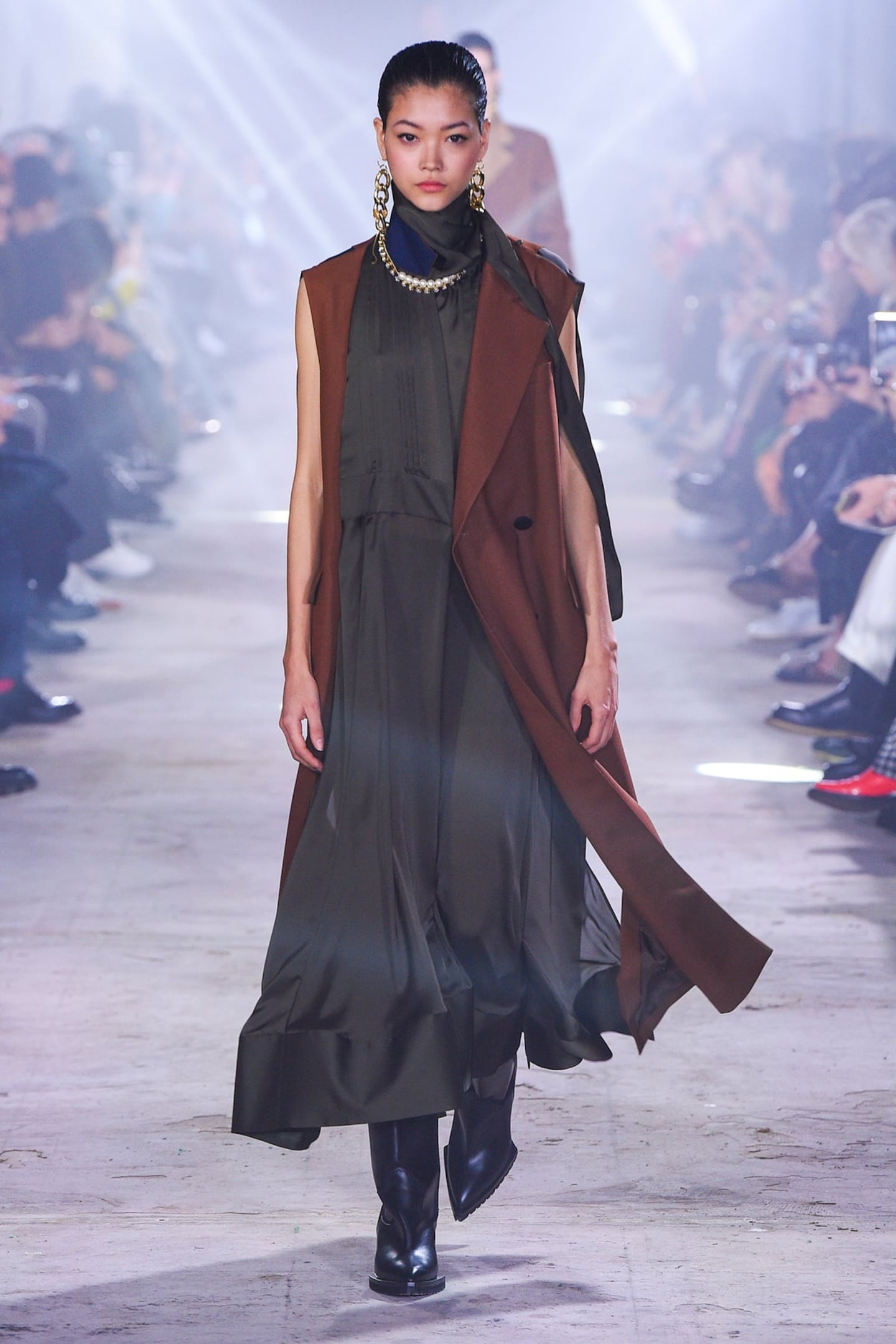
The Business of Fashion
Agenda-setting intelligence, analysis and advice for the global fashion community.

Agenda-setting intelligence, analysis and advice for the global fashion community.

PARIS, France — In a way, Sacai has always been a bit sci-fi. The very notion of the hybrid – the foundation of Chitose Abe's business – has a strong whiff of the future. But it got more literal with her show on Monday. First, there was Uma Thurman in "Gattaca," the greatest sci-fi movie of the 1990s, on the soundtrack. Then, there was the collaboration with NASA on images of outer space (cued by a snatch of Johann Strauss's Blue Danube Waltz, from "2001: A Space Odyssey," the greatest sci-fi movie of the 1960s).
There was also a rather more abstract experiment with 4D. Chitose insisted the most important element in the show was movement. “How the clothes flow while you’re moving and walking,” she said through her interpreter Miki Hagasa. “And, because the movement relates to time, you could call it 4D.” It wasn’t immediately obvious on the catwalk, but there were certain internal tricks that changed the way the clothes moved as they walked. Don’t ask me…it was quantum physics, Sacai style.
But aside from the mad science, the collection had a richness that felt new from Chitose. The caramel-ly duchesse that opened the show, combined with Infanta-like volume (a movement that was back to front, rather than side to side), bestowed a pleasing formality on the clothes. It shortly gave way to the surreal Sacai collusions we know and love — ski sweaters and plissé, flight jackets and chiffon, an immaculate blazer disappearing into a cloud of shearling — but even here, there was a sleek refinement. The ski sweaters, for instance, were devoré-ed velvet! A level of obsessive detail that is, in fact, quite unique in fashion because there is something a little unfathomable about it.
But aside from the mad science, the collection had a richness that felt new from Chitose. The caramel-ly duchesse that opened the show, combined with Infanta-like volume (a movement that was back to front, rather than side to side), bestowed a pleasing formality on the clothes. Pearls and crystals were embedded in necklines, trompe l'oeil jewelry. Chitose liked the idea of Sacai crossing from day to night, but the dressiness shortly gave way to the surreal Sacai collusions we know and love — ski sweaters and plissé, flight jackets and chiffon, an immaculate blazer disappearing into a cloud of shearling — but even here, there was a sleek refinement. The ski sweaters, for instance, were devoré-ed velvet! A level of obsessive detail that is, in fact, quite unique in fashion because there is something a little unfathomable about it.
ADVERTISEMENT
Which was actually the way I always felt about the enigma that was “Gattaca.” Chitose’s innately Japanese flirtation with the more fabulous tributaries of American pop culture — last season it was George Clinton’s P-Funk — attached itself to post-war American multi-hyphenate Alexander Girard this time round. His word-based textiles informed precisely two looks, which is something else to love about Sacai. Nothing, no matter how gorgeous or lyrical, ever overstays its welcome.
Something else to love – the way the lyricism is always balanced with something hard. Like the venue for Monday’s show. Low-ceilinged, concrete, derelict, strobed with endlessly questing spotlights. The setting put beauty on the run. It was a subtly perfect comment on a difficult week for fashion.
From where aspirational customers are spending to Kering’s challenges and Richemont’s fashion revival, BoF’s editor-in-chief shares key takeaways from conversations with industry insiders in London, Milan and Paris.
BoF editor-at-large Tim Blanks and Imran Amed, BoF founder and editor-in-chief, look back at the key moments of fashion month, from Seán McGirr’s debut at Alexander McQueen to Chemena Kamali’s first collection for Chloé.
Anthony Vaccarello staged a surprise show to launch a collection of gorgeously languid men’s tailoring, writes Tim Blanks.
BoF’s editors pick the best shows of the Autumn/Winter 2024 season.